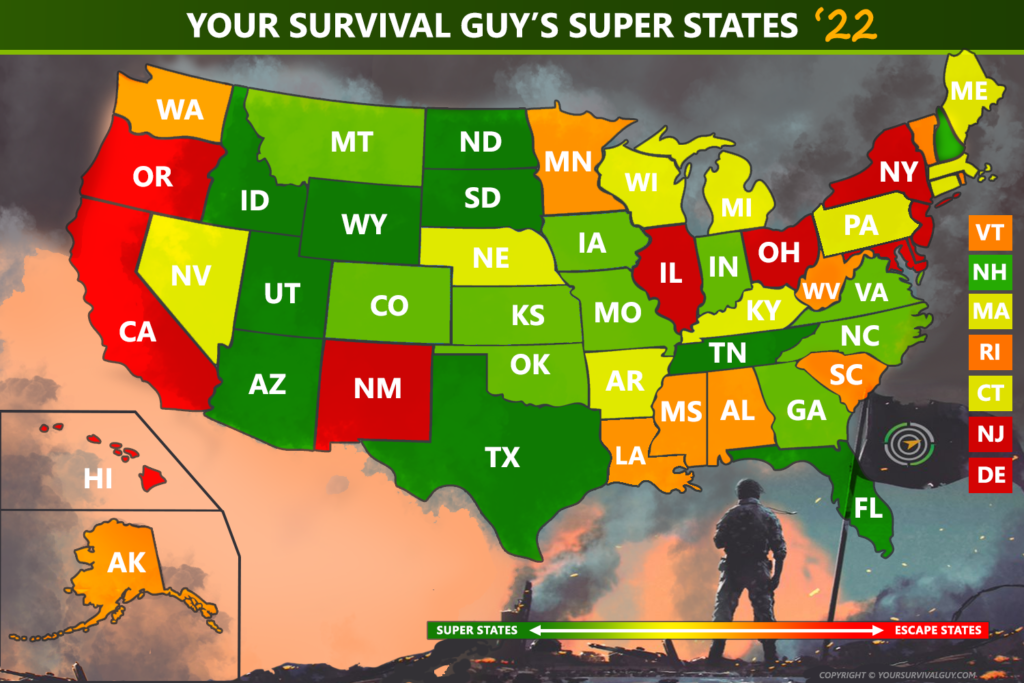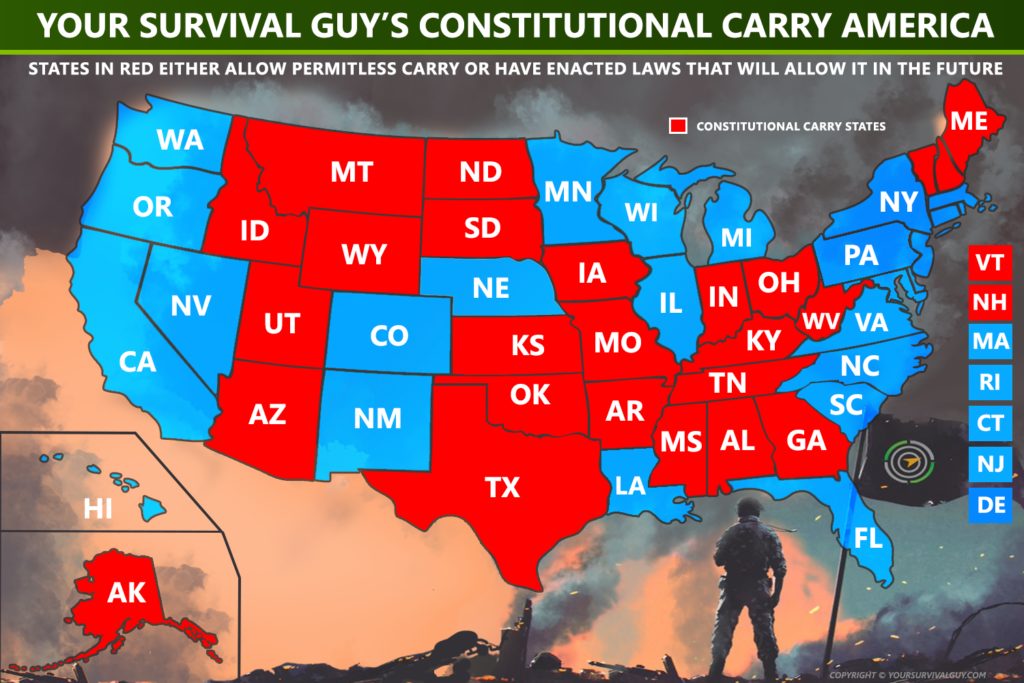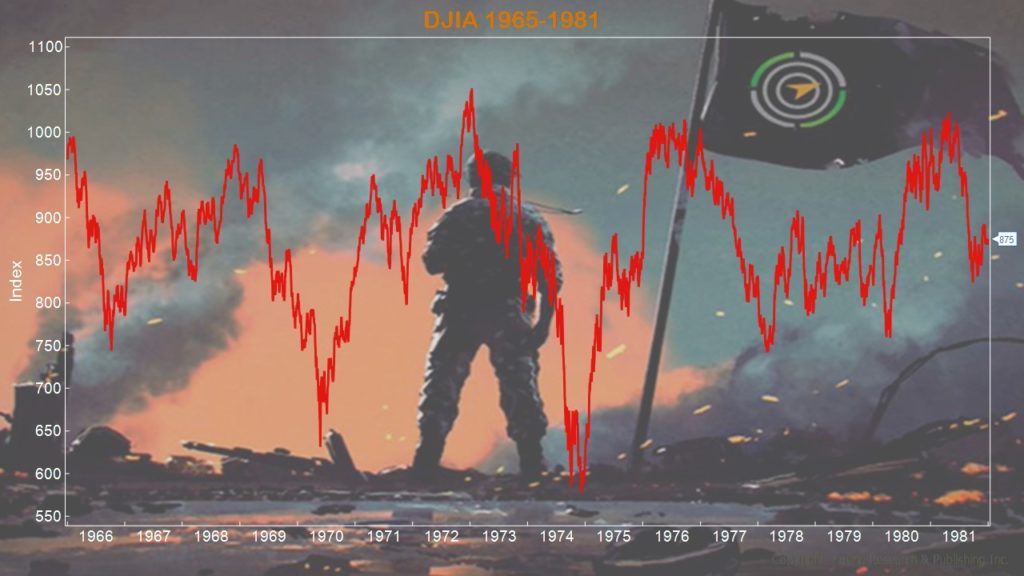
Dear Survivor,
“Watch this boat off our stern,” my dad said. “He’s coming in hot.”
“He’s throwing off a huge wake. You’ve got another one coming at us up ahead off port bow. Watch your channel markers. Keep this red to your left. Remember, we’re leaving, it’s not ‘Red Right Return.’ Pick a side up ahead. Looks like starboard passage is clear.”
Such was the reality check for our sailing trips, clearing any cobwebs from our eyes while navigating Woods Hole, a narrow channel where water funnels into Vineyard Sound from Buzzards Bay or, depending on the tide, vice versa. Just seven miles from homeport Mattapoisett, it was the first shakedown of the cruise where water would flow up to seven knots and boat traffic was typically in a rush to get “there.”
My dad was always patient with me when I was at the helm, especially navigating the “Hole.” He’d talk me through it when I was a kid, and as we got older it was more just a few words and head nods like: “You see him?”
“Got him,” I’d say. Nowadays, we don’t have to say anything. When he turns to point my attention to something he wants me to see, I already know what he’s thinking. I just smile.
A few years ago, I captained our Grady White with friends over to Matunuck Oyster Bar for lunch. It’s an easy trip from Newport, RI, right near Point Judith, another heavily trafficked channel with a mix of commercial and recreational boaters. If you’ve ever driven on route I-95, you can remember sharing the road with all the 18-wheelers, and you know how it feels to squeeze through the channel. On this afternoon, I swear the captain of a huge fishing vessel was smiling as he tooled on by us, throwing off a huge wake, turning to see how we handled it. Thanks!
But that’s boating, where the rules of the road are oftentimes unwritten. Knowing, for example, that this huge fishing vessel had the right of way and steering clear might have been the smart move. Going through Woods Hole can be the same.
But it’s not always that way.
There are times when the “Hole” is as calm as a lake. The sun reflects off the surface and small whirlpools invite you in for a dip as you motor past. Of course, that’s not the time for swimming because there’s still a slew of navigational beacons to connect and other yahoos to avoid, including that smiling hi-speed ferry captain (I imagine they’re always smiling), technically not speeding but going way too fast.
Getting the timing of the tides right is a huge advantage. It’s not rocket science, but it is a science. It takes years of “learning” as you go. It’s the understanding of the unwritten rules that can make or break a cruise. And it can be applied to all aspects of life, like stock markets.
PREPARE: No Go Zones Coming to Your Neck of the Woods
Your Survival Guy’s Super States map (below) gives you a bird’s eye view of where to immediately look for a better America—one where you can raise your family, own a house, and have a job with the peace of mind you deserve. The American dream. But simply putting your finger on a map and moving is easier said than done.
We’re talking about a moving target here, where one election could make or break how life moves ahead in your neck of the woods. Believe me, there are plenty of nice places to live in blue states like Newport, RI, but the sky-high trend in real estate prices and exceedingly expensive cost of living are not for the average Joe. But that’s not you. You’re above average.
Not all blue states are created equal. If you want to live in Rhode Island, there are plenty of areas in the western part of the state that operate more red than blue, as is the case with several areas in New York state. It’s the big blue blob cities that take the air out of the room and suffocate residents.
Your Survival Guy has lived in plenty of blue states I could call home. But these days, it’s a combination of red state New Hampshire, blue Newport, Rhode Island, red Key West, Florida, blue Mattapoisett, Massachusetts, and extended stays in Paris. This isn’t a one size fits all endeavor. What’s clear is in areas like Newport, Key West, and Paris, the real estate market is pricing out the service industry. Will the key to the future simply be to follow where they choose to live?
In addition, No Go Zones engulf new neighborhoods with a speed only a politician, protected by armed guards, could love. How is that protecting the people? For those who want a better America, the price of admission is becoming increasingly expensive, and basic services are in decline. It will take private money—and a lot of it—to maintain the standard of living. It’s either that or a forced adjustment to a new way of life. No one wants either option.
This is a trend moving like a freight train through a neighborhood near you. It’s been in the works for years—long before Covid. Covid was simply an accelerant. Protect your savings. Work until you can’t work any longer—crucial to your way of life. You can’t do it with your eyes closed and your head in the sand. It requires action.
Here’s Where Americans Want to Move
Americans are looking for cities with a low cost of living, and strong economies. The Wall Street Journal has run the numbers and found the top 10 cities in what it calls The WSJ/Realtor.com Emerging Housing Markets Index Summer 2022. The cities on the WSJ’s list are nearly all in red states, most of them are in my Super States, and the one standout, the Visalia-Porterville area in California, is in what is essentially a red island in the state’s sea of blue. The WSJ’s Nicole Friedman reports:
Low-cost cities with strong economies fared well in the second quarter as high prices and rising mortgage rates caused a swift slowdown in the housing market.
As remote or hybrid work schedules have become more common, households are willing to relocate for cheaper housing or a better quality of life. That migration helped push small, affordable markets to the top of the The Wall Street Journal/Realtor.com Emerging Housing Markets Index in the second quarter.
The index identifies the top metro areas for home buyers seeking an appreciating housing market, a strong local economy and appealing lifestyle amenities. News Corp, parent of the Journal, operates Realtor.com.
Overall, existing-home sales have dropped for five straight months. After two years of booming sales and skyrocketing prices, declining affordability and economic uncertainty have pushed some buyers out of the housing market. More sellers are cutting their list prices, and price growth is expected to slow in the coming months.
Elkhart, Ind., a metro area of about 206,000 people, was the top-ranked market for the quarter by the index, followed by Burlington, N.C.; Johnson City, Tenn.; Fort Wayne, Ind.; and Billings, Mont. The top 20 cities in the ranking have an average population size of about 400,000.
“All of the top 20 markets in our index fall into one of two categories: affordable or outdoorsy,” said George Ratiu, manager of economic research at Realtor.com. “For many young professionals, especially those with growing families, the cost premium of living in a city like San Francisco or New York has lost its allure during the pandemic.”
The Top 10 metro-areas on the WSJ’s list are:
- Elkhart-Goshen, IN
- Burlington, NC
- Johnson City, TN
- Fort Wayne, IN
- Billings, MT
- Raleigh, NC
- Rapid City, SD
- North Port-Sarasota-Bradenton, FL
- Topeka, KS
- Visalia-Porterville, CA
Do you live in one of these places? If you’re looking for a better America, maybe one of these cities is the place for you. Start your search with my Super States.
How to Avoid Going Back to Work after Retirement
Where did all the workers go? In what’s being called the “Great Resignation,” there’s nothing great about it, especially for investors who thought they had “enough” to retire on. It’s a terrible situation to be in, not knowing when to “get back” in or how to invest with safety in mind. That’s why you need a plan well before times like these, because a failure to plan is a plan to fail.
In my conversations with you, the first area we cover is risk. We talk about diversifying your portfolio with an eclectic mix of dividend payers and allocating for income/safety with bonds. We don’t use just any bond strategy, but a bond ladder where you own the bonds outright, much like you do a CD (there’s a set maturity date).
What’s hard about retirement is if you take a hit, it’s incredibly difficult to go back to work once you’ve retired. Make sure you’re in a good place before pulling the ripcord. Do you have a portfolio that will get you through the hard times? What’s your allocation? When will you take income, and will it be from your IRA before age 72 or not? These are questions that deserve an answer well before the storm.
If you’re investing in markets, I want you to be paid in the form of dividends and interest. If you need help constructing a mix that’s right for you—and only you—let’s talk.
YOUR RETIREMENT LIFE: Investing in the 70s, a Remembrance
Did you invest in stocks in the 70s? Do you remember the 70s? Like they say about Woodstock, if you do, “you weren’t there, man!” Look at my chart below to see why it was so forgettable.
Imagine retiring in the late 60s and spending your retirement years investing in stocks. Not much fun. But, if you went into retirement with a plan, there’s a good chance you could weather the storm by owning a mix of diversified assets. When I say plan, I mean preparing before retirement with answers to questions like:
- How much can I “afford” to spend?
- What kind of yield can I get on blue-chip dividend payers?
- Should I ladder a bond portfolio with short-term average maturities?
- How will a basket of currencies help diversify my dollar exposure?
- Does gold make sense right now?
- Can I work part-time in between bucket list trips?
- Does it make sense to invest in real estate? How about farmland?
- What is the optimal asset allocation that will help me survive and thrive?
Let’s focus on that last one. What if you had someone working with you to keep you on track with your allocation mix? What if he advised you to get your lazy cash off the Bean Bag chair and put it to work buying stocks while others are selling? Wouldn’t it be nice to have your life savings riding on an income stream generation rather than on fluctuating prices? What if you were investing in blue chip dividend-paying stocks that actually pay you for being invested? Isn’t that what investing is, receiving income and increasing it over time?
Your number one investment is in yourself: Your career, living within your means, being prudent. Work to make money, invest to keep it.
“Talk to Me, Goose!” Time Flies in Top Gun: Maverick
“Talk to me, Goose!” If you haven’t seen the sequel to Top Gun, then this is your chance to see it in a movie theater and realize how fast time flies. Because with the opening scene for Top Gun: Maverick, you’ll be brought back in time. It’s hard to believe it’s been 36 years since the first one. And yet, Tom Cruise looks about the same. Incredible he turned 60 over the Fourth of July weekend.
You’ll want to see Top Gun: Maverick at a movie theater because one of the best parts is the applause from the audience when the closing credits roll. It’s been years since we’ve been to a theater, and with the seats as comfortable as your dad’s old leather chair and the ease of buying tickets the night before, you’ll be ready to take flight.
When the lights dim and Tom Cruise personally introduces the movie, you know how special this is for him and how proud he is of the final product. That’s saying something. And if you haven’t seen the original Top Gun, don’t worry it’s not a requirement. But if you grew up in my household, you knew dad liked watching the beginning of Top Gun every July Fourth. I remember like it was yesterday, growing up in the 80s. I’d cut the grass with the Top Gun soundtrack tape in my Sony Walkman or ride my 10-speed Schwinn like a bat out of hell to “Danger Zone.”
Who said you can’t time travel? Tom Cruise makes it happen in Top Gun: Maverick. Happy Summer to you and yours. What a special gift.
Survive and Thrive this Month.
Warm regards,
E.J.,
“Your Survival Guy”
- If someone forwarded this to you, and you want to learn more about Your Survival Guy, read about me here.
- If you would like to contact me and receive a response, please email me at ejsmith@yoursurvivalguy.com.
- Would you like to receive an email alert letting you know when Survive and Thrive is published each month? You can subscribe to my free email here.
- You can also follow me on Gab, MeWe, and Gettr.
P.S. When a Texas father recently realized that the SUV he was riding in with his wife and children was being carjacked, he didn’t wait to take action. The father pulled out his firearm and fired shots at the carjackers through the rear window, hitting both of them. The family had just returned to their home when the carjackers struck. The NY Post’s Mary Ann Martinez reports:
Intense doorbell camera footage captures the moment a Texas dad opened fire on two teens who allegedly tried to steal his car with his two young children in the back.
The family had just arrived back at their Houston home early Monday when two 16-year-olds approached and tried to open the rear door of the SUV, where a 1-year-old child was seated, the Harris County Sheriff’s Office said.
There was another child also in the car at the time of the frightening incident, but the age of the second child was unclear.
The father, who was a passenger in the vehicle, squeezed off several rounds through the rear window, striking the two would-be thieves, authorities said.
At least four gunshots can be heard in the Ring camera footage, first obtained by KHOU.
The mom, who was the driver, then quickly drove away to get the family to safety, the sheriff’s office said.
The two teen suspects jumped into a waiting car and sped off, the surveillance video shows.
The duo was dropped off at a local hospital where they remain in stable condition, according to investigators.
No one in the family was injured. The father is not facing charges at this time as the sheriff’s office believes he was acting in self-defense.
Get your gun and your training now. You are your own first line of defense, and when seconds count, police are minutes away. Be a survivor.
P.P.S. As increased media attention pushes worries of a global food shortage, it’s important to remember that food storage and stockpiling are not the same as simply hoarding food. Like all important endeavors, a food preparation plan must be deliberate, maintained, and regularly modified and adjusted for maximum efficiency.
In a recent article, Dr. Joseph Mercola gives his thoughts on maximizing the nutritional value of stored food. He writes:
Many say they feel unsure about how to prepare for food shortages and famine, having no real experience with that sort of thing. Modern life has also in many ways made us overly reliant on technologies that might not be available in an energy shortage situation. Foods that require refrigeration or freezing, for example, might spoil and go to waste if you lose electricity for more than two days.
While the solutions will vary from household to household, depending on your financial situation, location and skill level when it comes to growing and storing food, here’s a list of shelf-stable and nutritious items that can help you get through hard times.
Ideally, you’d be eating these foods on a regular basis anyway. This way, you can easily rotate your supply rather than buying something once and then not touching it for years on end.
Many prepper recommendations fall short in that they primarily focus on large quantities of rice and beans, but unless you’re willing to let your health go to waste, you’d be wise to focus on nutrition rather than carb-rich belly-fillers.
- Animal protein — In my view, animal protein would be one of the most important supplies to stock up on. This would require the meat to be frozen. It would likely make sense to get another freezer to store enough meat for three to six months for your family. The key to making this work is to have a backup power supply, as there is a high likelihood the grid will go down and you will lose your investment.
The most economical way to do this would be to get ground bison, beef or lamb. Avoid pork and chicken due to high linoleic acid content. Ground meat is less expensive, but more importantly, takes up the least amount of space in your freezer- Canned wild Alaskan salmon, mackerel and sardines — All of these contain healthy fats while being low in toxic water pollutants and heavy metals
- Tallow, ghee and coconut oil — These healthy fats are ideal for cooking and remain stable even without refrigeration
- Organic beef broth and/or collagen powder — Beef broth is an ideal source of collagen, but organic grass fed collagen powder will stay fresh longer. Collagen is the most common and abundant of your body’s proteins, and is required for bone health, tissue integrity and repair
- Whey protein — Whey protein is rich in leucine, which helps stimulate muscle protein synthesis, thereby promoting healthy muscle. Without a regular source of meat, it can be difficult to achieve enough leucine to maintain body protein from diet alone. Fortunately whey can be easily stored and can serve as a resource to preserve your muscle mass
- Rice — Rice is a gluten-free staple that can be stored for long periods of time. Interestingly, white rice (my favorite is basmati) is far preferred over brown rice as the antinutrients in brown rice impair its role as a clean source of carbohydrates. Ideally, place the bag in a food-grade bucket together with an oxygen absorber or two, and make sure the lid is well-sealed
- Honey — In addition to being a natural sweetener, local unadulterated honey also has health benefits. For example, it’s an effective cough medicine and can help combat respiratory infections and bacterial infections, including antibiotic-resistant bacteria
- Macadamia nuts — Nuts are frequently recommended as a good source of fiber, protein and healthy fats that will stay fresh for a long time without refrigeration, provided they’re in a sealed bag or container. However, the reason why this is a terrible idea is that all nuts except for macadamia are loaded with very high levels of the dangerous fat linoleic acid. So, storing any nuts would not at all be helpful as you would only be able to have around five a day
- Canned beef — Look for varieties that use salt as the only preservative. Lehman’s canned beef is one such option12
- Organic freeze-dried fruit, vegetables and meats — For extra-long storage, you can also consider buying organic freeze-dried goods, which typically have a 25-year shelf life
- Essential nutritional supplements such as: Beef organ complex, essential minerals, omega-3, vitamin K2, magnesium, vitamin B complex and astaxanthin
But before you run out to buy chest freezers and a truckload of ground meat, you need to think about the realities of what you need. How many people are you feeding? Say you’re evacuating from a hurricane and your choice is to move all that food quickly or lose your entire investment, could you do it? How long are you planning on surviving on this stored food, and do you plan on supplementing it with other sources or living strictly on what’s in your storage area?
My point is not that you shouldn’t have food stored at the house. You know I’ve got sardines and SPAM enough to last me quite a while. But I want you to think hard about your plan because food is expensive, perishable, hard to move, and sometimes boring (think dehydrated eggs). You need to focus any food prep on foods you will actually want to eat, and will likely eat before they expire in your basement. Maintain a good understanding of when the foods you buy might go bad, and cycle new food in, and old food out. Think about how you would bring along food if you had to evacuate. Do you own enough coolers to move all the food in your chest freezer? Are you capable of lifting a cooler filled with frozen meat? They’re not light.
Look, I’m Your Survival Guy, I want you to survive. Definitely store food for the worst of times, but like investing, I want you to have a plan that makes sense. Don’t go hoarding food like you’re buying up tech stocks in a bull run. Be deliberate.
P.P.P.S. For over six decades, the Newport Folk Festival has been a key point of Newport’s summer festivities. There have been legendary performances given on its stage and memories made that last a lifetime.
This year, Paul Simon made his Newport Folk Festival debut, joining Nathaniel Rateliff’s American Tune Review to perform four songs, “Graceland,” “American Tune,” “The Boxer,” and “Sound of Silence.” According to StereoGum’s James Rettig, “He was joined by Rhiannon Giddens on ‘American Tune,’ and a whole bunch of performers came out for ‘The Boxer.’
“What a joy working with Nathaniel and his incredible band. The atmosphere at the festival was nothing short of wonderful,” Simon said.
Another legendary performer, Joni Mitchell, who graced the stage of the Newport Folk Festival for the first time in 1967, returned and, according to Ann Powers of NPR “stole the show.” Powers writes:
A woman who believed in a young Joni Mitchell’s music brought her to the Newport Folk Festival for the first time in 1967, and another brought the 78-year-old legend back for a historic set to close the Rhode Island fest this year. The first was Judy Collins, who invited a then-undiscovered Mitchell to join in an afternoon celebrating emerging singer-songwriters in folk music, alongside other future icons like Leonard Cohen. On Sunday night, Brandi Carlile was the force behind Mitchell’s return to the stage. The crowd was beyond elated as the voice behind classics like “Both Sides Now” graced Fort Adams for the first time since an evening appearance there in 1969, in what was her first full-length public concert anywhere since 2000.
Carlile has diligently worked to ensure Mitchell’s place at the center of popular music history for the past five years, performing tribute concerts, writing liner notes for the elder singer’s archival series and becoming a steadfast friend to Mitchell, who has spent years recovering from a 2015 brain aneurysm. The Newport set was a new high point in their ongoing personal and artistic collaboration. Billed as Brandi Carlile and Friends, it evolved from a supportive celebration of a beloved elder into a bona-fide Joni Mitchell concert.
Your Survival Guy was there too, on the water, enjoying the music with other boaters.
Come visit me in Newport. You’ll love the city, and we can discuss how to build a retirement portfolio that will give you the chance to chase what excites you, whether that’s folk festivals by the sea, fishing trips, or hiking in the mountains. You can contact me here to set up a meeting.
Download this post as a PDF by clicking here.







